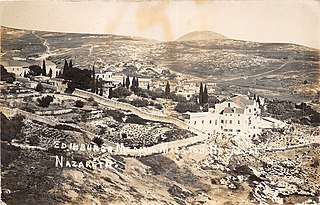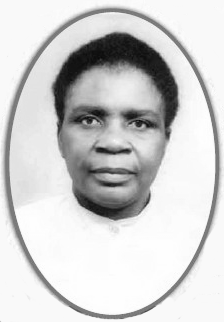
In the early 19th century, Western colonial expansion occurred at the same time as an evangelical revival – the Second Great Awakening – throughout the English-speaking world, leading to more overseas missionary activity. The nineteenth century became known as the Great Century of modern religious missions.
The Medical Missionary Society in China was a Protestant medical missionary society established in Canton, China, in 1838.
Medical missions in China by Catholic and Protestant physicians and surgeons of the 19th and early 20th centuries laid many foundations for modern medicine in China. Western medical missionaries established the first modern clinics and hospitals, provided the first training for nurses, and opened the first medical schools in China. Work was also done in opposition to the abuse of opium. Medical treatment and care came to many Chinese who were addicted, and eventually public and official opinion was influenced in favor of bringing an end to the destructive trade. By 1901, China was the most popular destination for medical missionaries. The 150 foreign physicians operated 128 hospitals and 245 dispensaries, treating 1.7 million patients. In 1894, male medical missionaries comprised 14 percent of all missionaries; women doctors were four percent. Modern medical education in China started in the early 20th century at hospitals run by international missionaries.
American Medical Missionary College was a private Seventh-day Adventist college in Battle Creek, Michigan. It grew out of classes offered at the Battle Creek Sanitarium. It existed from 1895 until 1910, with preclinical instruction in Battle Creek and further clinical training in Chicago, Illinois. In the latter year it was merged with the College of Physicians and Surgeons of Chicago (P&S), which in turn became the University of Illinois College of Medicine on March 6, 1913.

The growth and development of the American Presbyterian Medical Mission in Weixian, Shandong is an instance of the growth and influence of rural, missionary medicine in China. Moreover, the medical mission at Weixian exemplifies the shift from medicine being a component of evangelism to being able to exist as its own entity.
Robert Clark (1825–1900), and his colleague Thomas Henry Fitzpatrick, were the first English Church Mission Society (CMS) missionaries in the Punjab. Clark was the first missionary to the Afghans, and was the first agent of the Church to enter the city of Leh.

The EMMS Nazareth Hospital, also known as Scottish Hospital and English Hospital, is the Christian community hospital in Nazareth, Israel. It was founded as a Christian mission by Dr. Kaloost Vartan and the Edinburgh Medical Missionary Society in 1861. The hospital now houses 147 beds, employs over 500 staff, and receives over 50,000 visits annually.

EMMS International is a Non-governmental Organization (NGO) that provides medical aid to countries around the world and operates offices in the UK. Founded to provide clinical education and medical aid to people in need in Scotland, it later expanded to the Middle East, South Asia, and Africa through sponsoring the construction of dispensaries and hospitals. Its education expanded from training physicians in Edinburgh to training local nurses and physicians in the countries where it works. EMMS continues to provide resource assistance at all its sites. Based in Scotland, its vision is health for today, hope for tomorrow.

John Kenneth MacKenzie was an English medical missionary to China. He initially started his work through the London Missionary Society in Hankou (Hankow) in 1875. In Hankou, he treated patients in the London Missionary Society hospital, learned Chinese, and engaged in evangelism. The majority of the cases he treated were eye disease, opium addiction, and cases involving surgery. In 1878, MacKenzie transferred to Tianjin (Tientsin) due to the failing health of his wife. In Tianjin, MacKenzie constructed and ran a hospital with the help of the Viceroy's patronage and also established the Tientsin Medical School. MacKenzie also helped in the organisation of the Medical Missionary Association in China and the editing of the Medical Missionary Journal. He employed evangelism in many parts of his work but died an early death in 1888 due to smallpox.

Pacradooni Kaloost Vartan (1835–1908) was a physician and missionary. He founded the Nazareth Hospital, the first missionary hospital in Ottoman Galilee.

Scottish Protestant missions are organised programmes of outreach and conversion undertaken by Protestant denominations within Scotland, or by Scottish people. Long after the triumph of the Church of Scotland in the Lowlands, Highlanders and Islanders clung to a form of Christianity infused with animistic folk beliefs and practices. From 1708 the Society in Scotland for Propagating Christian Knowledge (SSPCK) began working in the area. In 1797 James Haldane founded the non-denominational Society for the Propagation of the Gospel at Home. Dozens of lay preachers, divinity students and English preachers were sent to the region. In the early nineteenth century a variety of organisations were formed to support evangelism to the region.

Kapelwa Sikota (1928–2006) was the first Zambian registered nurse, in the 1950s when her country was still the British protectorate of Northern Rhodesia. She trained and qualified in South Africa where nursing education was available before it was developed in Zambia. Her qualifications were not fully recognised at home until independence in 1964 when she was appointed to senior nursing posts. By 1970 she was Chief Nursing Officer in the Ministry of Health. In 2011 she was honoured posthumously by the Zambian Association of University Women.

The Canton Hospital (廣州博濟醫院) or Ophthalmic Hospital in Canton, also known as the Canton Pok Tsai Hospital, was founded by Protestant medical missionary Peter Parker in Canton, China on November 4, 1835. Known as Sun Yet Sen Memorial Hospital and Second Affiliated Hospital of Sun Yet Sen University, it treated thousands of patients in need, became the center for the Medical Missionary Society in China, and still exists today as one of the most prestigious ophthalmic institutes in the world.

The Church Missionary Society in the Middle East and North Africa, operated through branch organisations, such as the Mediterranean Mission, with the mission extending to Palestine, Iran (Persia), Iraq, Egypt, Ethiopia (Abyssinia) and the Sudan. The missions were financed by the CMS with the local organisation of a mission usually being under the oversight of the Bishop of the Anglican diocese in which the CMS mission operated. The CMS made an important contribution to the Episcopal Church in Jerusalem and the Middle East.

John Glasgow Kerr was an American medical missionary and philanthropist who helped establish The Canton Hospital, also known as the Ophthalmic Hospital, in Canton, China.
William Burns Thomson was a Scottish medical missionary born in Kirriemuir, Scotland to Christian parents. Thomson dedicated his life to the spread of the gospel and to medical missionary work. His work as part of the Edinburgh Medical Missionary Society(EMMS) transformed the organization from its focus on the slums of Scotland to an international missionary aid organization. During his time with EMMS, Dr. Thomson advocated for missionaries across the globe, including Dr. Kaloost Vartan of the Nazareth Hospital and Dr. William Jackson Elmslie in Kashmir. Dr. Thomson also served as a pioneer for medical missionary training by creating the original EMMS training school at the Cowgate dispensary. This led to more training schools being created in other parts of the world, like Bombay(now known as Mumbai) and Calcutta(now known as Kolkata), India.

Omar Leslie Kilborn, was a Canadian medical missionary who greatly advanced Western medical techniques in West China. He was one of the founders of the West China Union University in Chengdu, Sichuan, China and was a member of the Canadian Methodist Church. He was an educator, a leading professor of science and medicine, and the author of multiple medical and linguistic texts.

Frederick Charles Roberts was an English physician and medical missionary who served with the London Missionary Society in Mongolia and China. Roberts spent his entire career as a practicing physician in East Asia, dying in China after seven years of mission work. He is best known for his contributions as the sole medical provider and second director at the Tientsin Mission Hospital and Dispensary in China, where he treated an estimated 120-150 patients a day, and for his famine relief efforts in the rural districts outside Tientsin. He also taught at the first Western medical school in China and is the namesake of Roberts Memorial Hospital, which was established in T'sangchou, China in 1903.
Runa Mackay was a medical doctor and peace campaigner who dedicated much of her life to looking after the health of Palestinian people and victims of war and exile.

Gottlieb Friedrich Adolf Olpp was a German missionary and tropical medicine doctor, accredited with spreading Traditional Chinese Medicine and aiding the development of sinology in Germany and the West in early 20th century. As a medical missionary from the Rhenish Missionary Society from 1898 to 1907 in Dongguan, Guangdong Province of China, he conducted extensive research on local diseases and healing practices, such as Traditional Chinese Medicine (TCM) and wrote extensively throughout his life for publication in Germany on the topic of tropical medicine, theology and missionary work. After his return to Germany, he was appointed to be the director of the German Institute of Medical Missionary, a director of the Tübingen Convalescent Homes and associate professor of Tropical Medicine at the University of Tübingen. A street in Tübingen is named in his honor.















